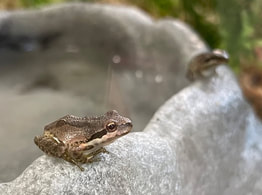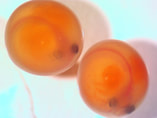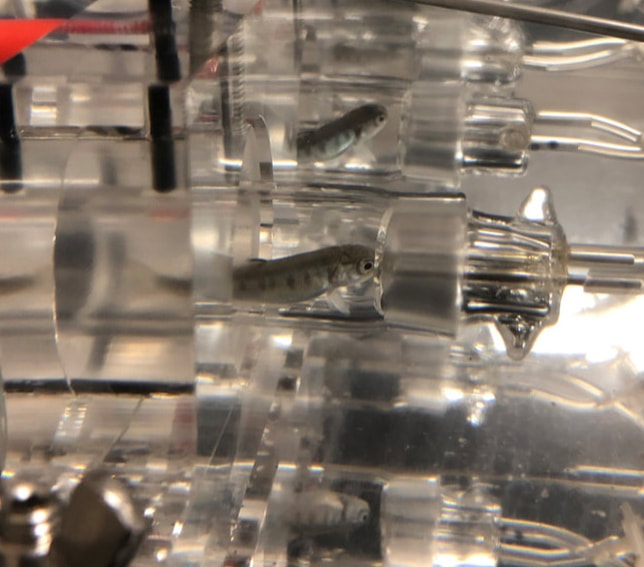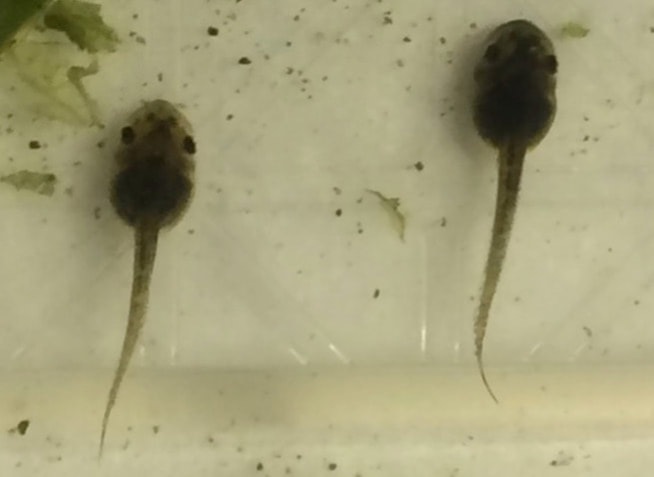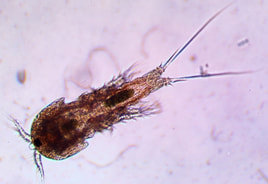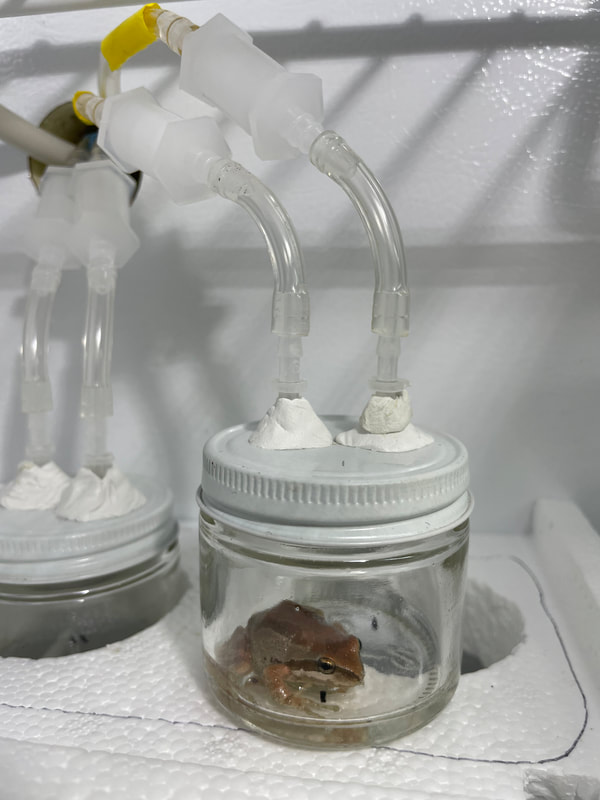The Mueller lab is currently interested in three interrelated areas of developmental physiology research:
|
Baja California chorus frogs
Immediate & Long-term Effects of Developmental Temperature on PhysiologyTemperature has a pervasive effect on all animals, particularly ectotherms. We are interested in responses to temperature across early life history, from embryos to juvenile stages, which can often be particularly thermally sensitive. We examine ‘immediate’ responses to temperature (e.g. How does incubation temperature treatment influence embryonic survival, growth, hatching, oxygen consumption?) but also the long-term influence on later life stages (e.g. how does embryonic incubation temperature influence larval function? How do larval rearing conditions influence juvenile physiology?) Thus, this research is vital for understanding the impacts of predicted increases in temperature with climate change on not just developmental stages, but throughout the entire life history of the organism. We are examining the effects of temperature on developmental traits across all of our model species. In particular, we are examining how temperature during development may influence function in embryos, tadpoles and froglets of the Baja California chorus frog. This allows us to explore whether phenotypic traits are maintained across the metamorphic transition (e.g. Are there carryover effects?)
Chorus frog metamorphs feeding
|
Rainbow trout embryos
Inter-individual Variability in Morphological and Physiological Traits during DevelopmentExploring the effect of temperature on phenotypic traits often focuses on the ‘average’ responses between treatment groups. What is often ignored is the level of variability of traits that exists between individuals under the same conditions and how that changes as the environment is changed. That is, does an increase in temperature create greater variability between individuals in their phenotypic traits? This inter-individual variability is important to understand as it has potential implications for how a population as a whole will respond to environmental change. We are examining how different temperature conditions during development influence not only the average response, but how variable the response is. With a current focus on chorus frogs, we are collecting data across life stages (embryos, tadpoles, froglets) on development time, morphology, oxygen consumption rate, and swimming performance to understand how temperature influences inter-individual variability.
Rainbow trout juveniles in respirometry chambers
Chorus frog tadpoles
|
Intertidal copepod
Metabolic Responses to the Thermal EnvironmentA common theme throughout all of our research is how metabolism responds to different thermal conditions. Metabolism is such a fundamental part of an animal’s physiology, and provides a relatively easy way to examine how much ‘physiological work’ an animal is undertaking. We measure oxygen consumption rate as a proxy for metabolic rate across all of the species we work on in the lab, from chorus frogs and rainbow trout to copepods and brine shrimp. We examine various aspects of metabolism such as metabolic compensation, when organisms demonstrate temperature-independent oxygen consumption rate, to how metabolism changes following exercise. We also examine metabolic responses following temperature changes on a very short term scale (e.g. hours, How does copepod oxygen consumption rate change following a rapid increase in temperature often experienced in the intertidal zone?) to long-term (e.g. months, How does the embryonic and tadpole developmental environment influence metabolism of post-metamorphic froglets maintained under common garden conditions?).
Chorus frog in respirometry chamber
|
Collaborators
With the help of Dr. Felipe Barreto at Oregon State University, we are examining transcriptomic responses of chorus frogs in response to temperature during development. We also collaborate with Felipe on copepod responses to temperature. Felipe is an evolutionary and ecological geneticist who examines, among many things, the genetic divergence of copepod populations and the generation of novel phenotypes produced from interpolation crosses.
We are working with Dr. John Eme, a fellow CSUSM Biological Sciences faculty, Russell Barabe, an Environmental Scientist with California Department of Fish and Wildlife, and Sandra Jacobson, the Steelhead Coalition Coordinator at CalTrout on the rainbow trout research. You can read the story of steelhead recovery in southern California here.
We continue to discuss the complexities of developmental physiology with Dr. Warren Burggren at the University of North Texas.
With the help of Dr. Felipe Barreto at Oregon State University, we are examining transcriptomic responses of chorus frogs in response to temperature during development. We also collaborate with Felipe on copepod responses to temperature. Felipe is an evolutionary and ecological geneticist who examines, among many things, the genetic divergence of copepod populations and the generation of novel phenotypes produced from interpolation crosses.
We are working with Dr. John Eme, a fellow CSUSM Biological Sciences faculty, Russell Barabe, an Environmental Scientist with California Department of Fish and Wildlife, and Sandra Jacobson, the Steelhead Coalition Coordinator at CalTrout on the rainbow trout research. You can read the story of steelhead recovery in southern California here.
We continue to discuss the complexities of developmental physiology with Dr. Warren Burggren at the University of North Texas.
